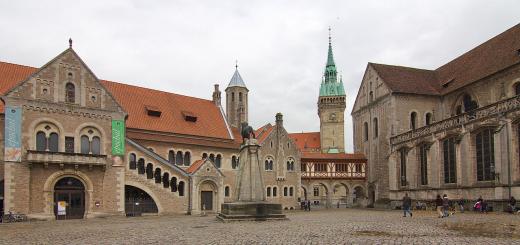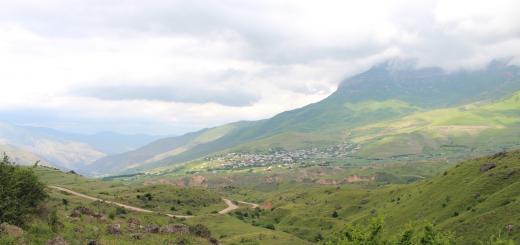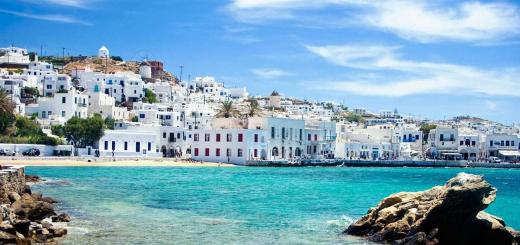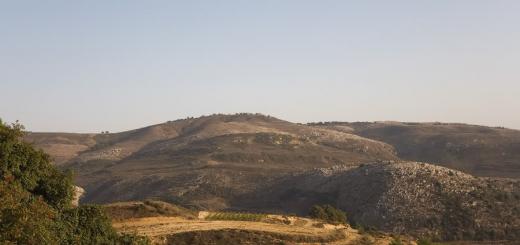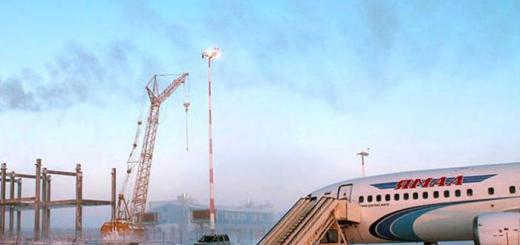Poland is beautiful mountains, virgin forests, majestic rivers and lakes, amazingly beautiful cities. Here, thousands of medieval monuments coexist with modern objects. This is confirmed by the unique Crooked House in Sopot, which has no analogues in the world.
The centuries-old history of Poland has left hundreds of monuments that are striking landmarks of the country, illustrating the path of its development and prosperity, decline and destruction, recovery from the chaos of wars and uprisings. Each ancient city is a kind of landmark, reflecting a particular era, system, historical events. A good example is the capital of Poland - beautiful Warsaw, where you can see a historical monument in every corner of the city.
One of the main squares of the city in the Middle Ages was considered princely, because it was surrounded on three sides by palaces and castles of noble gentry, descendants of ancient aristocratic families. This place can be considered a Phoenix bird in architecture: there have been so many destruction and revival, created by human hands.
The square, located on the left bank of the Vistula, was connected to the right-bank district of the city by a bridge and an overpass, blown up by the Nazis in 1944. The city authorities decided to transfer public transport to the tunnel built under the Vistula, and to build a new one instead of the old blown-up bridge.
The project, which changed the original appearance of the old square, was carried out in 1949. On July 22, the inauguration of the tunnel and the new bridge took place. The square has become a pedestrian area. Thanks to the joint efforts of historians and architects, all the houses built in the Baroque style were carefully restored; other buildings have been meticulously restored - evidence of a bygone era.

A striking example of the revival is the Royal Castle, the construction of which was started in the 16th century by King Sigismund III and continued until the 19th century by the following rulers who created a whole palace complex.
The fire of 1939 and the explosion of 1944 thoroughly destroyed the magnificent architectural structure, in which only the wing of the Royal Library remained intact. As a result of the greatest reconstruction, the castle acquired its former appearance, adorning the historical square.

The central symbol of the square is the Corinthian column, which forms part of the Baroque monument in honor of King Sigismund III. The column is 8.5 meters high, crowned by a 2.7-meter statue of a king in knightly armor, was installed in 1643. But this monument was also destroyed by the departing fascists in 1945, leaving the bronze sculpture of the king unharmed.
The column was restored anew in 1949, using red granite instead of the old red marble, erecting a statue of Sigismund on top. The monument was erected in a new place - an elevation at the entrance to the Krakowskie Przedmiescie, from where it is clearly visible from all parts of the Old Town.

One of the largest and most magnificent buildings in the capital, located on Krakowskie Przedmiescie Street, has a long and complex history of its existence. Its construction began in 1643 for the crowned hetman Stanislav Konetspolsky and was completed in 1648 by the hetman's son Alexander.
Over the centuries, many owners of the palace have changed, each of whom sought to change something, to add to the building - the result was a monumental majestic building that served as the presidential residence from the 90s of the last century until the 2010 plane crash. Now the palace square is a place of memory of the victims, where on a sad date the inhabitants of Poland and tourists bring flowers and light candles.
A magnificent white building with many arched vaults, surrounded by a high openwork lattice, adorns the main city. The square in front of the building is unusually beautiful and solemn: the majestic monument to Jozef Potocki, the mighty sculpture of a lion, slender cypresses, neatly trimmed live shrub hedges - emphasize the splendor of the presidential palace.

Malbork Castle or Marienburg, as the Germans called it, is a symbolic embodiment of significant historical events and movements: Teutonic knights and crusaders, Polish princes and kings found shelter within its walls. The castle is truly unique as one of the largest medieval fortresses built of bricks in a typical Gothic style.
The unique complex was also badly destroyed during the Second World War and was completely restored, presenting now a vivid example of a medieval castle surrounded by a high brick wall, round watchtowers, palace buildings inside a huge courtyard occupying 20 hectares of land.
Taken under the protection of UNESCO, the castle today is a real tourist Mecca, where travelers from all over the world come.
Interesting articles:
Tatras - a natural landmark of Poland

On the territory of Poland there are the most picturesque mountains, which are a continuation of the Carpathians and are called the Tatras. The richest coniferous forests, glaciers, unique lakes, green valleys create an excellent natural infrastructure for the development of ski resorts and bases. The area of the High Tatras is more suitable for more extreme sports, because individual peaks reach 2000 m and more.

The center for skiing sports and recreation is the high-mountain resort of Zakopane, which has wonderful ski and snowboard tracks, an abundance of interesting routes, excellent sanatoriums and recreation centers.
They strive to preserve and develop the Polish folk color, original Polish culture, national cuisine and traditions. The pristine beauty of mountain landscapes, combined with a high level of modern infrastructure, make the resort of Zakopane one of the best ski resorts in Europe.
In Poland there is something to see and where to have a good rest.
How to get to Poland? - in more detail in our article.
On the territory of Poland, the bus network of the Polski Bus carrier is well developed, with the help of which you can get to every point of our route. And what is important for your budget, the cost of the trip will not exceed € 5-6, and if you plan everything in advance, then there are almost always tickets for the price of € 1.
Accommodation prices in all cities of the route are approximately the same:
- bed in a hostel - from € 5
- hotel room 3 * - from € 20 for two
- hotel room 5 * - from € 70 for two
The easiest way to get to Poland from Ukraine is by plane. Wizz Air has cheap flights to various Polish cities, including Katowice, a city that is close to Krakow and is a convenient starting point for our route.
There are also direct bus routes and trains from Kiev and Lviv, or you can make the most budgetary route with several transfers and cross the border on foot.
Krakow
Just a few hours and you will find yourself in the medieval - cultural capital of Poland. Its heart is the Old Town (included in the UNESCO World Heritage List) with the spacious Market Square, the Church of St. Mary and the Wawel Castle. For a long time, Krakow was the place of coronation of Polish monarchs, although the capital of the country was located in Warsaw - you can learn more about this on the excursion "
Poland is an amazing country with a rich history and priceless cultural heritage. Old Polish sights such as city quarters, powerful defensive structures, original monuments of architecture and art make it incredibly attractive for tourists. And the famous medieval castles for which Poland is famous give it a unique romantic charm. We invite you to get acquainted with the most interesting sights of Poland, which we will talk about in our article.
1. Warsaw Palace Square
The Warsaw Palace Square opens our list of attractions in Poland. Since ancient times, this place has been the social and cultural center of the Polish capital, and it is from here that, according to tradition, the acquaintance with the Old Town begins. The main symbol of the square is the monument to King Sigismund, erected in the 17th century. The monument is a massive granite column on which stands a bronze sculpture of the Polish king and the Grand Duke of Lithuania Sigismund III, holding a saber in one hand and a cross in the other. The entire eastern side of Palace Square is occupied by the Royal Castle, which for a long time served as the official residence of Polish monarchs. Today, Palace Square, as before, is the main attraction of the city and a must-see in Poland.
2. Royal Castle in Warsaw

One of the most visited sights in Poland is the Royal Castle, built by King Sigismund III at the beginning of the 17th century. For a long time, the castle served as the residence of kings and the seat of the Diet. According to the old tradition, from the main tower of the castle, the 60-meter Tower of Sigismund, a trumpet signal is heard every day at 11:15. Nowadays, a museum is located in the building of the Royal Castle. The Great Hall, the Marble Room, the Palace Chapel, the Royal Bedchamber, the Knights' Hall and the Throne Room are very popular among its visitors. In the galleries of the museum, you will see a rich collection of paintings, which includes paintings by Rembrandt and Canaletto, and in the spacious halls of the castle, official receptions and state meetings are held.
3. Warsaw Market Square

The Market Square, considered the main place of Warsaw from the 13th to the 18th century, is located in the very heart of the Old Town. At one time, large fairs were held on the Market Square, thanks to which the attraction got its name. A special charm to this place is given by colorful stone houses with colorful facades, cozy cafes with summer tables on the street and a variety of souvenir shops. Here you can also buy paintings by local artists and listen to pleasant music performed by street musicians. In the center of the square there is a monument to the legendary Warsaw mermaid, who guards the city with her shield and sword. And, of course, one cannot ignore the Historical Museum of Warsaw, the exposition of which will help to get to know the rich history of the Polish capital.
4. Wilanow Palace

The magnificent Wilanow Palace, located on the outskirts of Warsaw, rightfully belongs to the most luxurious palace and park attractions in Poland. It was built at the end of the 17th century for Jan Sobieski, an outstanding commander and king of the Polish-Lithuanian Commonwealth. Wilanow Royal Palace is made in the Italian Baroque style and is surrounded by a huge park, which includes English, Italian, Chinese gardens and a wonderful greenhouse. The best Polish craftsmen worked on the interior decoration, and valuable works of art decorating the palace were brought here from different European countries. The picturesque frescoes, exquisite sculptures, rare portraits and antique furniture evoke real admiration for visitors. Art exhibitions, musical concerts and performances of the Royal Theater are traditionally held in the halls of the Wilanow Palace.
5. Wawel Royal Castle in Krakow

It is no coincidence that the ancient city of Krakow is called the historical heart of Poland - from the 11th to the 16th century, Krakow was the capital of the Polish state. Since the 11th century, the official residence of the Polish rulers was the Royal Castle on the Wawel Hill on the banks of the Vistula River. In addition to the royal chambers, the architectural ensemble of the castle includes the Cathedral of Saints Stanislav and Wenceslas, where the coronation ceremonies of Polish monarchs took place. Special attention should be paid to the rotunda of the Blessed Virgin Mary, Sigismund's chapel, a mysterious cave called the Dragon's Lair, as well as a sculptural image of the legendary Wawel dragon, spewing out a real flame every 5 minutes. The Wawel Castle houses a rich collection of paintings and tapestries, and one of the halls hosts monthly concerts of early music. The Royal Castle in Krakow is a real treasure trove of Polish history and culture. This attraction in Poland will be interesting for every tourist.
6. Market Square in Krakow

The Market Square is not only a visiting card of Krakow, but also one of the largest medieval squares in Europe. Since the 13th century, the Market Square was the main place of trade in the entire Polish state, and today it is a real cultural and tourist center of Poland. Among the main attractions of the Market Square are the old Church of St. Wojciech, the majestic St. Mary's Church and the Sukiennice trading house in the very center of the square. On the first floor of the Sukiennice trading house, there are numerous showcases with national Polish souvenirs, and on the second floor there is a museum of Polish painting. No less interesting for tourists is the St. Mary's Church, from the tower of which the sound of a trumpet can be heard every hour, as a tribute to the ancient tradition, when the trumpeter notified the inhabitants of a fire or the onset of enemies. And, of course, on the Market Square you will meet street artists and musicians, sellers of souvenirs and fresh flowers, horse-drawn carriages, creating an atmosphere of urban romance.
7. Auschwitz

The museum complex of Auschwitz serves as a reminder of one of the darkest chapters in human history: during the Second World War, there were three Nazi concentration camps, also called "death factories". From 1941 to 1945, more than a million prisoners of war - Jews, Gypsies, Russians and Poles - were tortured in the crematoria and gas chambers of Auschwitz. Before their death, the prisoners of the camp were tortured with hunger, grueling labor and used to conduct medical experiments. In the museum, you can inspect the premises in which the prisoners were kept, see a collection of their personal belongings, learn more about the history of the concentration camp and honor the memory of the deceased prisoners of Auschwitz.
8. Malbork

The magnificent medieval Malbork Castle, located in northern Poland, is known as the largest Gothic architectural complex in the world. Since the 13th century, the castle served as the residence of the Grand Master of the Teutonic Order. In the 15th century, Malbork turned into a powerful defensive structure of the knights-crusaders, and then became one of the residences of the Polish kings. The huge castle complex housed halls for receiving guests, monastic cells, premises for officials, stables, workshops, bakeries and other buildings. Today, a museum dedicated to the history of Malbork Castle is open for tourists. The concerts of early music and knight's feasts, which are traditionally organized in the state halls of the castle, make a great impression. Every year in the middle of summer, a grandiose historical reconstruction called "The Siege of Malbork" takes place near the castle walls. This is one of the must-see places in Poland.
9. Artus's courtyard

Artus' courtyard in the center of Gdańsk is a complex of ancient stone buildings used for social events. The history of the Court dates back to the early Middle Ages and is associated with the legend of King Arthur and the Knights of the Round Table. Since the XIV century, the Artus Court served as the center of the social and cultural life of Poland: within its walls, representatives of the authorities and noble citizens met, meetings of merchant unions were held here and grandiose celebrations were held. The main building of the Artus Court contains the most interesting objects of antiquity and art: armor of knights, models of sailing ships, exquisite jewelry and rare paintings. Particularly noteworthy are the oldest pewter bar in Poland from the 16th century, and a huge five-tier stove with a height of more than 10 meters, decorated with painted tiles. Artus's courtyard is rightfully one of the main attractions of Poland; a visit to it will not leave indifferent even the most sophisticated travelers.
10. Zhurav

Perhaps the most original architectural landmark of Gdansk is Zhurav - an old harbor crane, with the help of which, in the Middle Ages, they raised masts on ships, unloaded and loaded merchant ships. The crane mechanism was driven by workers moving huge wheels to which a rope was attached. In addition, Zhurav served as a city gate, as well as a defensive structure: brick towers on the sides of the crane were equipped with combat weapons. A copper crane is installed on the roof of the structure - a symbol of vigilance. Inside Zhurav there is an exhibition dedicated to the history of the legendary crane and the life of port workers. The crane uraw is the most recognizable symbol of Gdańsk, its image invariably adorns magnets and postcards with city views.
11. Ksienzh Castle

The magnificent Ksi Castle, located 80 km from Wroclaw, is the real pride of Poland and one of the largest castles in Europe. Ksi Castle was built at the end of the 13th century as a princely fortress. For many centuries, the castle belonged to Polish, Czech, Hungarian rulers, and each of the owners tried to rebuild it to their liking. This explains the extraordinary variety of styles that can be discerned in the architecture of the building: the combination of Gothic, Renaissance and Baroque makes the appearance of the castle truly unique and inimitable. The imposing size of the building makes a strong impression: inside visitors await about 400 rooms and halls, decorated with special luxury. In summer, designer flower exhibitions are organized in the halls of Ksi Castle, and festive balls are held in the Maximilian Ballroom shortly before the New Year.
12. Historical Museum of Warsaw

The Historical Museum of Warsaw has a rich collection of exhibits showing the development of the history and culture of the Polish capital from the time of its foundation to the present day. The museum is located in the center of the Old Town, on the Market Square, and occupies eight buildings with facades of different colors, standing close to each other. The collection of the museum includes paintings, graphics, sculptures, frame coins and valuable archaeological finds. Most of the exposition is devoted to the history of the city during the Second World War. The history of Warsaw is reflected in documentaries that can be viewed in the cinema hall located in the museum.
13. Museum of the Polish Army

The Polish Army Museum is one of the most interesting museums in Poland. Its rich exposition is entirely devoted to the history of the Polish army. The oldest exhibits of the museum - helmets, swords and armor - date back to the Middle Ages and belong to the first rulers of the Polish state. Special attention should be paid to the trophies of Prince Jagiello from the time of the Battle of Grunwald, the banners of the Polish legions of the era of the partition of Poland, Napoleon's hat and saddle and personal belongings of the famous military and political leader of Poland - Tadeusz Kosciuszko. The art department has an excellent collection of battle paintings, drawings and posters. But the most impressive exposition of the museum is the open-air exhibition of military equipment: cannons, tanks, aircraft and other examples of heavy artillery are displayed here.
14. Kurnice castle

In the list of the most visited sights of Poland, the Kurnicki Castle occupies an important place, located half an hour's drive from the city of Poznan. Kurnice Castle was built in the 15th century and belonged to the family of Polish tycoons Gurkos. Unlike most old Polish castles, Kurnicki Castle is not a harsh knight's fortress, but a romantic suburban residence in the neo-Gothic style. The interiors of the castle have been perfectly preserved since the 19th century: the Moorish Hall with a collection of knightly armor and decorative porcelain, the Hunting Corner, the Great Salon and the Dining Room with a portrait of the White Lady, whose ghost, according to legend, still lives in the castle, is of great interest to visitors. Particularly noteworthy is the Kurnitsa Library, which contains many old printed books, maps and manuscripts. In addition, Kurnicki Castle is surrounded by a picturesque park - one of the largest dendrological parks in Poland, which gives the castle even more charm.
15. Wroclaw Cathedral

The Cathedral of St. John the Baptist in Wroclaw rounds out our list of the most interesting sights in Poland. The majestic building of the cathedral with two high towers perfectly complements the city's architectural ensemble. Wroclaw Catholic Cathedral is considered the oldest Gothic church in Poland: its history began in the distant XIII century. At the beginning of the 20th century, an organ was installed in the cathedral, which is still the largest organ in Poland. The cathedral was badly damaged during the Second World War, but after reconstruction it regained its original appearance. The main shrine of the cathedral is the statue of the Virgin Mary and Child, which miraculously survived during the bombing and fire in the forties. The Cathedral of St. John the Baptist is rightfully one of the most recognizable symbols of Wroclaw; it will be interesting for every tourist to visit.
Poland is a country with a rich history. Lovers of antiquity have something to see. To inspect the architectural monuments, it is enough to visit the historical centers of the ancient cities of the country. For example, Gdansk, Krakow or Torun, which have preserved historical buildings with a thousand-year history.
Many excursion routes include the castles - Marienburg, Wawel and Wilanow Palace. Museums will tell about the sad pages of Poland's history: Auschwitz-Birkenau, European Solidarity Center, Museum of the Second World War. Separately, it is worth mentioning religious buildings. These are large architectural complexes - Kalwaria-Zebrzydowska. And some architectural masterpieces - Yasnaya Gora Monastery or Vang Church.
The best hotels and hotels at affordable prices.
from 500 rubles / day
What to see and where to go in Poland?
The most interesting and beautiful places to visit, photos and a short description.
1. Castle Marienburg
In 1274 the castle was founded by the Teutonic knights. It was rebuilt and expanded several times in the XIV century. From the 15th to the 18th century it was the seat of Polish kings. The invasion of the Swedes, and then the Second World War, left only ruins from the castle. By now, the reconstruction initiated by the Polish authorities has been fully completed. Tourists can admire the castle as a magnificent example of Gothic brick art.
2. Warsaw Old Town
Historical district founded in the XII century. It is a popular tourist destination. After the Second World War, most of the buildings of the Old Town were rebuilt from photographs and preserved drawings, for which they were included in the UNESCO list. The old preserved buildings are the Cathedral of St. John the Baptist and the Warsaw Barbican. The center of the old town is the Market Square. Now it houses many cafes, shops and souvenir shops.
3. Wieliczka Salt Mine
The development of the rock salt deposit in Wieliczka took seven centuries. During this time, 7 levels of underground corridors with a total length of 200 km appeared in it. The depth of the deposit is almost 200 meters. UNESCO has taken this unique industrial site under its protection. Excursion routes include a visit to the Chamber of Casemir the Great, the underground chapel of St. Anthony and Danilovich mine shaft of the 17th century.
4. Wawel (Krakow)
An architectural complex located on a hill in. Includes the Cathedral of St. Stanislav and Vaclav and the Royal Castle. For Poland, these structures are the same symbol as the Kremlin is for Russia. A massive castle in the Gothic style, a cathedral with high 20-meter towers, several small chapels and churches - they create a unique architectural ensemble that is visited by hundreds of tourists every day.
5. Kazimierz (Krakow)
Monument to the history of Poland, is included in the area of the Old Town of Krakow. Historically, it is the place of residence of Jews. The famous film "Schindler's List" about the Holocaust was filmed here. There are 7 synagogues in the Jewish quarter, which managed to survive during the Second World War, now they have been restored. Travelers note the coziness and special atmosphere in Kazimierz, different from the Old Town.
6. Market Square and Cloth Hall (Krakow)
The central trading place of Krakow is the Market Square, founded in 1257. Palaces, churches and old buildings are located on a 200-meter-long square. In the center of the square there is the Cloth Hall - an architectural monument. Wooden benches are located under the arches in the neo-Gothic style, the walls are decorated with decorative stucco. Next to the Cloth Hall is the Church of St. Wojciech, who is almost 1000 years old.
7. St. Mary's Church (Krakow)
The construction of the cathedral was completed in 1397. The three-nave basilica was built in the Gothic style. One tower of the church is crowned with a pointed spire, the other - with a helmet. The tallest tower is 82 meters. The interior inside the church is decorated with stained-glass windows, as well as works of sculpture and painting. The main decoration is the altar, 13 meters high. It is carved from linden and combines Renaissance and Gothic elements.
8. Historical center of Gdansk
One of the oldest cities in Poland - it was founded in the X century. The city is an architectural complex of buildings built in the XIII-XVIII centuries. In many museums - archaeological, painting, marine. A large number of historical monuments are concentrated in the Old Town. At the entrance to the historic center, there is the Golden Gate, behind which are located the most beautiful buildings in the city.
9. Church of St. Mary (Gdansk)
The construction of the church, 105 meters high, lasted from the middle of the 14th century to the beginning of the 16th century. There is an observation deck on the bell tower with views of the historic city center. Inside there are magnificent works of art from the Middle Ages - a stone Pieta, an astronomical clock, an altar built at the beginning of the 16th century. Local residents consider it a miracle that the church was practically not damaged in a fire in 1945.
10. Old town Zamosc
In the 16th century, Zamosc was built by Italian craftsmen as a fortress city, but in the 19th century, picturesque gardens were arranged instead of the fortress walls. The historic city center with Renaissance buildings is a UNESCO World Heritage Site. Beautiful buildings are skillfully integrated into a single architectural urban ensemble. Among the architectural monuments, the building of the City Hall, the Zamoyski Palace, and the Cathedral are distinguished.
11. Old Torun
The oldest part of the city of Torun is included in the UNESCO cultural heritage list. The construction of the city began in the 13th century. The city walls have been partially preserved to this day, separating the historical part of the city from later buildings. The castle of the Teutonic Order, the Church of St. Mary and the House of Copernicus are considered masterpieces of brick Gothic. The center of the old district is the Old Market with the Torun Town Hall.
12. Town Hall and Market Square of Wroclaw
The Market Square, founded in the 12th century, is the main attraction. In different eras, it was built up with buildings of different architectural styles. In the center of the square there is a whole block of mansions with elements of Gothic and Art Nouveau in design. The most interesting object is the city hall. It took almost 300 years to build, from the 13th to the 16th century. Now the town hall is a museum object.
13. Wroclaw gnomes
Unusual bronze figurines of gnomes are the symbol of Wroclaw. It all started with the installation of a monument in the form of a gnome by the city authorities in 2001, and since 2006, many private organizations began to install their gnomes. Currently, there are about 400 figurines in different parts of the city. Each gnome has its own character and story. The quest to find all the dwarves of Wroclaw is popular among the guests of the city.
14. Hall of the Centenary and Wroclaw Fountain
The grandiose building, built in 1913, is used for concerts and sporting events. One of the world's first reinforced concrete structures, and at the same time it is a magnificent example of early modernism. Included in the list of objects protected by UNESCO. A multimedia musical fountain is installed next to the hall. Its illumination consists of 800 lighting points. In winter, a skating rink works at the site of the fountain.
15. Palace of Culture and Science (Warsaw)
Tallest building in the country. The height of the 42-storey skyscraper is 240 meters. The construction was carried out with the money of the Soviet Union by Soviet builders. Moscow's "Stalinist skyscrapers" were taken as a model. As a result, the palace building combines the styles of Stalin's neo-empire and Polish historicism. The premises of the building are occupied by museums and exhibitions, as well as offices of private organizations, shops, a swimming pool, theaters, conference rooms.
16. Manufaktura (Lodz)
Large shopping and entertainment center in the city of Lodz. It was built in a modernized building of a large 19th century manufactory. The area of the mall is 26 hectares. It houses more than 300 stores of major global and national brands. The complex also includes a hotel, a skate park, a bowling club, a rollerdrome, a climbing wall and a cinema with 15 halls. Notable is the fountain 300 meters long, installed near the mall.
17. Wilanow Palace
The palace was built at the beginning of the 17th century for King Jan Sobieski as a country residence. An architectural monument in the Polish Baroque style. It combines the principles of European art and the traditions of Polish building architecture. The facade is decorated with sculptures and intricate décor. In 1805, a museum was opened in the palace, which exists to the present day. The chic and picturesque Wilanow Park is laid out around the palace.
18. Warsaw Uprising Museum
The museum occupies 4 floors of the former tram depot building. Its exhibits are dedicated to the 1944 Warsaw Uprising. In total, 750 exhibits and about 1000 photographs are displayed at the museum's exhibitions. Near the museum, on the 156-meter-long Memorial Wall, the names of 10,000 dead insurgents are engraved. The movie "City of Ruins" is shown in the cinema hall, which shows the horror of the destruction and devastation of Warsaw during the uprising.
19. Museum Auschwitz-Birkenau (Auschwitz)
There were three large Nazi concentration camps in Auschwitz. During the Second World War, more than a million people died in them, mostly Jews by origin. In 1947, the Auschwitz-Birkenau Museum was opened here, dedicated to the terrible events of the war. More than a million people visit it every year. On the territory of the museum in 1967, a monument was opened in honor of the victims of Nazism.
20. Oskar Schindler's Factory (Krakow)
The activities of this factory are shown in the film "Schindler's List". The founder of the factory ransomed prisoners from concentration camps to work in production, so he helped thousands of people avoid death. The exhibition "Krakow during the Occupation 1939-1948" attracts a large number of visitors. It was opened in 2010 and tells about the history of the factory, the fate of the Jews of Krakow and the life of the population during the occupation.
21. European Solidarity Center (Gdansk)
Multimedia Museum and Library Complex in Gdansk. Opened in 2014 and is dedicated to the creation and work of the opposition movement "Solidarity". The building is made in the form of a ship, its area is 25,000 m². 6 halls of the museum tell about the emergence of the popular movement, the history of Poland, the change of the political regime and the fall of communism. Visitors can use the audio guide, including in Russian.
22. Museum of the Second World War (Gdansk)
Located on a peninsula in the city of Gdansk. The museum was opened in 2017. The building is an example of Polish modern architecture. The main exposition is located in the underground part. Its funds amount to 50,000 exhibits. The concept of the museum is interesting - to show the horrors of war not only from the point of view of politics, but through the eyes of an ordinary person. The installations of the museum are shocking and make a strong impression.
23. Wooden churches in the south of Lesser Poland
In the south of the country, there is a complex of valuable architectural wooden churches. They are created in different styles - Baroque, Renaissance, Gothic. The earliest objects were built in the XIV century. One of the first buildings is considered to be a church in Khachuv in 1388. Part of the complex is under the protection of UNESCO. A special tourist route has been developed to visit the southern Lesser Poland churches; it is popular among travelers.
24. Churches of the world
Large religious wooden buildings of the 17th century, included in the UNESCO list. Of the three built churches, two have survived to date. They are located in the towns of Swidnica and Javor. The church in Swidnica can accommodate 6,000 parishioners. Its ceilings are decorated with paintings of scenes from the Bible. The church in Yavor is 1,090 m² and can accommodate 7,500 parishioners. The architectural solutions of the facades of the churches are extremely original.
25. Kalwaria Zebrzydowska
A religious architectural and park complex in the center of Poland on the slopes of the mountains. During the construction of the park, the natural features of the area were taken into account. The structures of the park symbolize the procession of the cross and the passion of Christ. They have a complex architecture. The building of the chapel of the Cathedral of Our Lady is made in the form of a heart, the house of Pontius Pilate is in the form of a Greek cross, and the house of Kaifa is in the form of a simple ellipse.
26. Church of Vang in Karpacz
Located at the foot of the Snezka Mountain in a beautiful dense forest. The church was built in the style of traditional Scandinavian architecture. The building was built in Norway in the XII century, and in the XIX century it was moved to Karpacz by order of the King of Prussia Wilhelm IV. The church was built from Norwegian pine without the use of nails, but at the same time it is an incredibly solid building. The facades of the outer walls are decorated with ornaments.
27. Monastery Yasnaya Gora (Czestochowa)
Catholic monastery in the city of Czestochowa. Belongs to the monks of the Pauline Order. They erected a monastery on a 293 meter high hill in the 14th century. The height of the bell tower of the monastery in the Baroque style is 106 meters. At the corners of the quadrangular monastery there are powerful arrow-shaped bastions. The main attraction is the Czestochowa Icon of the Mother of God, which is considered miraculous among believers.
28. Ksenzh Castle
It is located near the city of Walbrzych and is the third largest in Poland. The castle is part of the Piast Castles tourist route. Founded in the XIII century. It got its modern look under the possession of the Hochberg dynasty. In wartime, the Nazis removed all valuables from the castle. But even now there is something to see there. In a beautiful garden - an exhibition of flowers and shrubs, in the halls of the castle - an exhibition of porcelain and ceramics.
29. Zakopane
There are several ski resorts here. The city is called the "winter capital of the country" because of the thousands of tourists who visit Zakopane at this time of year. It is located at the foot of the Tatra Mountains. Clean air, beautiful views of snow-capped peaks, dense coniferous forest and well-developed infrastructure make it ideal for relaxation. Such entertainments as - tens of kilometers of ski tracks, skating rinks, thermal pools are presented.
30. Masurian Lakes
A group of lakes with a total area of 310 km². Consists of 2000 reservoirs of different sizes of glacial origin. Picturesque forest reserves are located on the shores of the lakes. This place is popular with travelers not only for its natural beauty. The infrastructure for tourists is well developed here. It is possible to order a boat trip, a tour of historical sites, or just walk along the paths on the banks.
31. Tatra National Park
Large park in southern Poland. It is located in the landscapes of the Tart Mountains belonging to the Carpathians. Occupies an area of 22,000 hectares. 70% of the park's area is occupied by forests, the rest of the territory is covered by rocks with 750 caves, lakes and a waterfall. The forest in the park is predominantly coniferous. The highest mountain, Lynx, is popular with climbers. I like the park and hikers. Trails of varying difficulty have been laid for them with a total length of 270 km.
32. Belovezhskaya Pushcha
Large relict lowland forest. Included in the UNESCO heritage list. Located on the territory of two neighboring states - Poland and Belarus. The ancient forest is home to many animals, but the most valuable is the bison. Tourism is developed in the reserve on the Polish side. The main tourist center is the village of Bialowieza; it is here that tourists gather before excursion routes.
33. Wroclaw Zoo
The 33 hectare zoo was founded in 1865. At the same time, buildings were built in it of architectural value - the House of Monkeys or the House of Butterflies. The zoo is home to over 10,000 animals. An open-air cage with an area of 1.2 hectares has been built for brown bears. The pride of the zoo is Afrikarium - a large oceanarium with different ecosystems of the continent. Interesting sections are the Terrarium and the Madagascar Zone.
34. Lazienki Park (Warsaw)
An old palace and park complex with cultural and historical monuments. Founded in the 17th century by order of Hetman Lubomirsky. It houses the Palace on the Water - a secluded pavilion with a Chinese-style bath. Another attraction of the park is the Roman Theater. This is an amphitheater built by the water, decorated with statues of ancient poets. Undoubtedly, it is worth seeing the Old and New Greenhouses, the Myshlevitsky Palace, the White House.
35. Beach and pier of Sopot
The seaside resort of Sopot is famous for its sandy beach. Long, wide and safe. The necessary infrastructure has been equipped - changing cabins, sports grounds, cafes and bars. The length of the beach line is 4 km. There is also a historical landmark - a 55-meter-long wooden pier. Concerts are often held on its above-ground part, the "sea" part is ideal for walks.
What interesting places and sights are there in Poland? What is a must see? Read the review prepared by Travel The World
👁 Before you start ... where to book a hotel? In the world, not only Booking exists (🙈 we pay for a high percentage from hotels!). I have been using Rumguru for a long time
skyscanner
👁 And finally, the main thing. How to go on a trip without bothering? The answer is in the search form below! Purchase. This is such a thing that includes flight, accommodation, food and a bunch of other goodies for good money 💰💰 Form - below !.
There is a lot to see and admire in Poland. That there is only one architectural appearance of the country, in which different directions of cultures of the East and West, majestic Gothic churches and classical palaces intersected. There are many attractions not only in big cities - they also exist even in very small settlements. So, let's start our story about the main attractions of Poland.
Warsaw

The capital of Poland, which is rightfully the economic, cultural, scientific, transport and tourist center of the country. The historical sights of the city are concentrated on the left bank, while the new district of Prague is located on the right. In the old part of the city (Stare Miasto) there is the most beautiful park of the capital - the azienki park. On its territory there is a palace of the same name, two greenhouses and an amphitheater. Also in the old town, visit the Palace Square, in the center of which is the column of Sigismund III, erected in 1634-1644 at the initiative of his son, Vladislav VI. Fans of museum trips will have a lot to turn around - there are 43 museums in Warsaw, the main of which is the National Museum, the treasury of which contains many exhibits related to various periods of Poland's life.

An ancient city that miraculously survived from total destruction during the Second World War.
The main attractions of this beautiful city are the residence of the kings - Wawel, royal road, St. Mary's Church and market.
Also in the city there are many interesting museums, visiting which you will spend your time with benefit.
The “Wieliczka” Salt Mines are located 10 kilometers from the city, where salt was mined from 1280 to 1992. The depth of some workings reaches 320 meters, and the number of chambers exceeds 2000.

The city is the center of the region in which Poland was created more than a thousand years ago. While visiting this city, pay attention to such sights as the Old Town with the Market, the Town Hall and old houses and Tumskiy Island with churches of the 13th - 15th centuries built. For lovers of active recreation, the Malta Park with a sports complex and a water sports center will be of interest.

The city, which is on the second place after Warsaw in terms of the number of inhabitants. Of the interesting places in Lodz, it is worth paying attention to such as the Museum of History, the Museum of Art, the Rector's Office of the ód Polytechnic, the White Factory of Ludwik Geiler, the Petersi House and the largest Jewish cemetery in Europe with an area of more than 40 square kilometers.

One of the oldest Polish cities. The first information about him dates back to the X century. Among the sights of the city, it is worth stopping at such as the Lublin Castle (XIII-XIX centuries), the Holy Trinity Chapel (1418), the Lublin Catholic University, the Town Hall, Trinity Tower, the Museum of Religious Art, as well as visit the Krakow Gate and the market square.
Not far from Lublin there is one very sad and scary place - the Majdanek concentration camp, which killed 360,000 people during the Second World War.
In the city of Czestochowa, there is an icon of the Blessed Virgin Mary or the Black Madonna, in connection with which the city has become one of the centers of pilgrimage for Christians around the world. It is located in the Pauline monastery on Jasna Góra.
The city of Gdynia will offer you interesting museums - the City Museum, the Oceanographic Museum and the Maritime Museum.

In the old days it was one of the residences of the crusaders and the birthplace of the great Polish scientist - Nicolaus Copernicus. The main historical sites are located around the market. These include the Town Hall, the Church of the Holy Virgin Mary, the Church of St. Jacob and the Church of St. John, the monument to Nicolaus Copernicus and his house-museum. It will also be interesting to visit such places as the fort of the Second World War, the astronomical observatory, the Museum of Art of the Far East and others.
For lovers of outdoor recreation, we recommend visiting Masurian Lake District, on the territory of which there are more than 1000 lakes. In this region of pristine nature, large landscape parks and reserves are organized. Also, do not forget that there are about a thousand different caves on the territory of Poland, the most beautiful of which are Rayskaya near Kilche and Medvezhya near Klodzko.
👁 As always, do we book the hotel on the booking? In the world, not only Booking exists (🙈 we pay for a high percentage from hotels!). I have been using Rumguru for a long time, it is really more profitable than 💰💰 Booking.
👁 And for tickets - to air sales, as an option. It has been known about him for a long time 🐷. But there is a better search engine - skyscanner - there are more flights, prices are lower! 🔥🔥.
👁 And finally, the main thing. How to go on a trip without bothering? Purchase. This is such a thing, which includes flight, accommodation, food and a bunch of other goodies for good money 💰💰.

